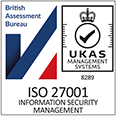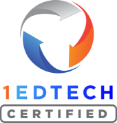Dr Ruth Wallace and Jo Lines from Edith Cowan University on ‘Multiple learning pathways in Health Science.’ This recording is from our 2022 Perth, Australia MiniBash community event. Videos are for educational personnel only and require a live educational email to watch. You can read the video transcript below.
Transcript:
Alright. So hi, I’m Joe Lines. And this is my colleague, Ruth Wallace. I work in the center for learning and teaching here at ECU, and Ruth is the course coordinator for the back law of health science in our School of Medical and Health Science. And what we’re going to share with you today is an approach that we’re taking to try and embed PebblePad and portfolio learning in this course.
But it’s a course as the title might say if I would put the right slide on.
Oh, yeah. It’s a course with multiple learning pathways. So basically, what we’re meaning by multiple learning pathways is students don’t start in their first unit in first year and then just work their way systematically right through to the end of their course. They’ve got the option of choosing a health promotion major or an occupational health and safety major or some other kind of thing.
And so there’s lots of different pathways that students go through from the start of their course until the end. And so how do we systematically support them to build their career readiness and to integrate their learning so that by the time they reach the end of their course, they can go for a job interview and understand what their own capabilities are. Remembering that there’s quite a few students hundreds I’d say five hundred students. And so, you know, students aren’t doing the same sets of units at the same time because it’s not a prescribed pathway.
So that’s our challenge. I’ll let Ruth tell you about the course Alright. Thank you, Jo. So the bachelor of health science is complex.
There are many different pathways, lots of different study options for students.
The one thing that they all do the same is eight core units, but then that’s where it all goes a bit.
Not pear shaped, just wiggly.
So they’ve then got the choice of doing two eight unit majors, and there’s four of those to choose from. Or they can do one of our specialised sixteen unit major. So lots of different variations and and there’s a whole bunch of minors that they can do as well. So lots and lots of different variations and lots of different pathways students can follow. On top of that, we’ve got four different professional accreditations.
And then we’ve got a whole raft of other professional competency requirements that students would be needing to demonstrate. So we have to consider all of those as well. So there’s lots of different nuts and bolts to this course.
On top of all those different study pathways, we’ve then got a teaching team of give or take twenty staff.
Depending on how many sessions we’ve got on any given semester and forty plus units So those forty plus belong to our school, but then we’ve got a whole bunch of others that sit outside the school as well. So the challenge there is bringing that all together to really offer a sort of cohesive experience for the students.
Alright. So the purpose then of this project that Jo and I have been working on, we give her a little while now.
Certain things have slowed us down somewhat. The COVID being one of them and Canvas being the other.
But the challenge really is designing that portfolio that really works out how to bring together oh, it’s gone off.
Bring together all those diverse elements of the curriculum, but bring them together in a really coordinated way so that we can support student learning. That’s the key point.
So we’ve taken a really collaborative approach to doing that.
We’ve been coordinating and liaising with a range of ECU services. So careers and employability services being one of them. So that’s to get students thinking about their career direction right from the get go, library and peer support services, and learning technology. So obviously the tech part of it, which is a huge part of it. Senior learning designer.
All hale Jo.
Industry partners. So we’ve run this past our consult committees and got their buy in and their advice on this as well. Jacqui, we’ve gone off again.
And of course, the course teaching team, which I’m going to touch on a little bit later.
But towards the end of the presentation. I’ll hand back to you, Jo. Alright. So while they work out the tech, let me give you an idea.
We’re approaching this using the ECU framework, which you may have seen earlier this morning. So this is ECU’s whole of university approach, and we’ve decided to use this to guide our decision making. So as you can imagine, One of the professional accreditations has something like forty four competencies with another ten under each of those. And that’s one. And we’ve got four of those to deal with. So giving students a pathway or a portfolio to make sure they meet all those competency requirements is literally impossible because not every student needs every every competency.
So we’ve chosen this as a framework to guide their learning. Now the elements of this that are important, the green circle represents activities the ECU will support outside of a unit curriculum. And that’s really important for us because it’s going to help us to know how and where we can refer students for a little bit of extra help even though the activity might not occur inside the unit. And then the blue represents things that are already happening in our curriculum anyway, such as, you know, your career development and your will and that kind of thing.
So the process that we’re undertaking, we’re we’re looking at this as a portfolio process, and the student at the end of this will have the portfolio as a product. What we’re going to give them is PebblePad the tool.
We think it’s the best tool for a couple of reasons. One, because It’s designed for students to collect, reflect, and articulate. So it’s that’s its function, that’s its purpose. It’s well supported and well embedded in our ECU systems, and so there’s a lot of resources and services around.
So one of the impediments quite often to implementing your portfolio is academic staff. And I mean we’ve got more than twenty of them going, I can’t use that. It’s impossible. Alright?
So now we can say, well, actually, yes, we’ve got some people and some processes in place to help you. And here’s you know, and we’ll actually work with them on that. The other thing is that we’ve got peer support happening for our students. And that’s super important.
We’ve had a lot of problems in the past with academics going, I am not going to be the tech help person. So now we can say, that’s okay. Bring in the library. They’ve got student peers, senior students who are going to learn what your needs are, and then the students can go to them out of hours or out of class actually get the help.
So you can see how like having a coordinated institution approach is actually really going to help the success of the process.
Other elements that we think are important are the fact that we’ve got support in curriculum and out of curriculum, and we’ve come up with a little bit of a mantra that we’re going to now take to the course teaching team about PebblePad will be used for students to collect collect evidence. It could be documents, it could be a video, it could be a photo of themselves somewhere.
They’ll learn how to select and reflect on the evidence and to articulate their capabilities themselves, and and that’s what the portfolio will help them to do.
So it’s a little bit hard to see, but this is an example of one of our portfolio pages. So the idea of this is that the learning happens in the learning management system.
Okay? PebblePad is not going to be filled with video case studies and how to services and resources, all of that is learning and that is happening in the learning management system because that’s what it’s designed for, and that’s its purpose.
PebblePad is the tool the student goes to to self manage their career readiness. And we’re making that a really, really clear distinction because otherwise, because we’ve got such a big course team to work through, students going to get confused to what tech to use when. Alright? So the learning management system will house, all the how to resources, all the case studies, and that can be regularly updated.
The portfolio workbooks will be fairly static as you can see very minimalist.
Students will have a place to add evidence, to reflect, and they’ll be prompted with different activities to do.
Here’s another page. This will be a co curric activity, and it’ll be around leadership. Do you have any leadership skills Have you ever mentored someone? Have you done any volunteering? Those sorts of things, pop it in here, and then at the end of the course in their final core unit, they’ll actually create a portfolio themselves using all the little pieces of information they’ve purposefully collected throughout their course.
Yeah. Yep.
Alright. So Alright then. So the challenges then as Jo alluded to. Whenever you say to an academic hears something else to do, they’ll go, oh, it’s gone off again.
They’ll go too busy too busy, so it’s often perceived as as busy work. Something else to add to that to do list, I am no exception.
So, you know, oftentimes, it’s a a competing demands that we’re we’re asked, like it’s perceived that we’re asking teaching staff to do something different. So that’s why it’s been so important to have that support from the side. So it especially the tech support on hand as part of the design process so that it it’s a process that isn’t added adding to the workload and that the support is there for the students. So we’re not we’re not asking the academic to be that tech support person.
The enablers really have been us being able to highlight how the project is going to benefit student employability.
We, you know, that’s one of our KPIs.
It’ll help us to meet that KPI.
And again, the support from the side is essential.
So the senior learning designer in the design and the process. So we’ve mapped out our whole course. We’ve identified the key units across each of those majors so that the students will be touching the e portfolio.
We hope at least once a semester so that career readiness, employability is not a big surprise when they get to their last semester in third year and go, oh, now I need to start to look for a job. We’ve been plugging away at that since day one. Massaging.
Massaging. Okay. Massaging. That’s a better word. Reminding.
Yeah.
Again, tech support is there from the library.
And what we’re also doing to sort of reduce that concept that this is busy, extra work is embedding the eportfolio in units where there are already existing learning opportunities that will easily transfer into the e portfolio.
So that we’re supporting employability but we’re also minimising any disruption to the teaching staff and to the students as well.
I think That might be about it. So if there are any questions?







